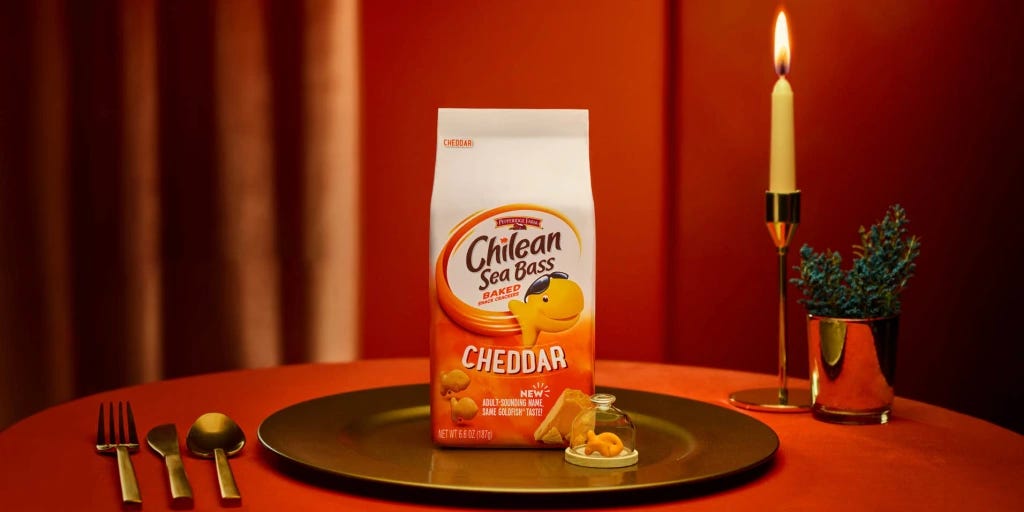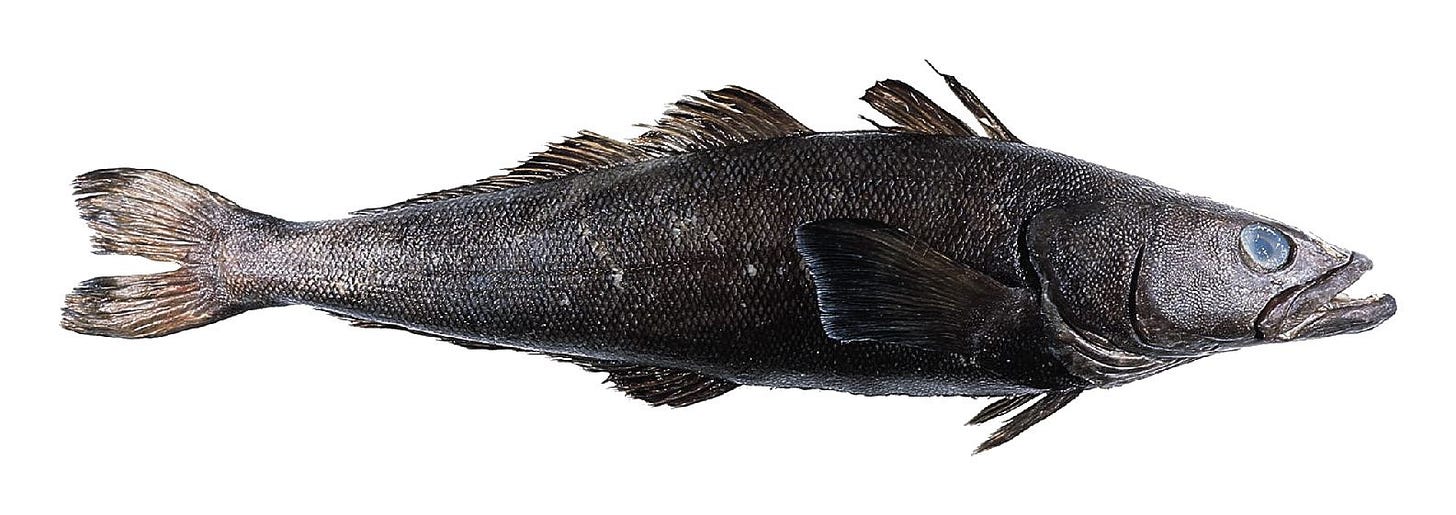Goldfish crackers are now Chilean Sea Bass. In an attempt to appeal to adults (and stir up some social media attention), the cheesy cracker brand announced a cheesy marketing stunt: They’ve temporarily changed their name. “Chilean Sea Bass is a playful nod to adults that the iconic fish-shaped snack is for grown-up tastes too,” explains vice president of Goldfish Danielle Brown. “So sophisticated, so adult,” says an actor in a promotional video.
Nearly fifty years earlier, an American fish merchant took a trip to Valparaiso, Chile. It was 1977, and Lee Lantz climbed between colorfully painted wooden fishing boats docked in the Chilean port city. He examined the piles of fish lying on the decks of these vessels. Lantz was hunting for something new. He wanted to find the next big fish — something that would capture the palates of Americans: something with buttery white flesh, something mild in flavor.
Just when he was about to give up, a fish caught his eye. It was ugly and terrifyingly large, running five feet long and weighing over a hundred pounds. It was gray-black in color, and it had bulging eyes and a protruding jaw with spiky little teeth. The fish was menacing, more likely to be found in a horror movie than on a dinner plate. “That’s one amazing looking fish,” Lantz said to his guide. “What the hell is it!?”
It was a Patagonian toothfish. Because the toothfish lives deep in the bowels of the ocean, fishermen only just discovered the fish in the 1970s when they started using deep-water longlines. They didn’t want to catch toothfish; it was bycatch, and nobody knew what to do with it.
As frightening as the fish looked, Lantz wasn’t deterred. He bought one and cut into it.
And, when he did, his eyes widened. He struck seafood gold: The toothfish’s flesh was white and flaky. When he cooked it up, Lantz was underwhelmed. The fish had no flavor. But, he still saw potential: Its texture was like cod, its richness was like tuna, its lack of flavor like flounder, and its oiliness gave it a buttery mouth feel. This fish could capture the American market.
But that name wouldn’t work. Toothfish? What American would eat that? Lantz knew he wanted to call it “sea bass” because the toothfish was closely related to sea bass, with similar-looking flesh. But he needed an adjective. Pacific? South American? These were too geographically imprecise — almost generic. Chilean? That was the answer.
And Chilean sea bass was born.
But it wasn’t an immediate rise to the top. Lantz spent years peddling the fish to potential buyers — he didn’t break through until 1980 when a fish sticks manufacturer substituted Chilean sea bass for halibut. It was cheaper and looked similar, even if it didn’t taste the same. American Cantonese restaurants also started buying the fish as a cheap substitute for black cod. Toothfish sales climbed, even though the fish’s reputation didn’t; it was still seen as relatively undesirable.
Then, in the 1990s, high-end chefs embraced what made the fish special. Its blandness made it a versatile canvas that a chef could paint with any flavor. And, it was virtually impossible to overcook. Chilean sea bass made its way to the upper echelons of American dining, appearing on the menu at New York’s Four Seasons in 1990 and then at restaurants like Nobu and Tao.
You might not be able to overcook Chilean sea bass, but you can overfish it. The fish is slow to mature and reproduce, so as demand for the “sea bass” skyrocketed, its populations depleted. By the late 1990s, the stocks were about to collapse. Whole Foods stopped selling the fish, and more than 700 American chefs joined a “Take a pass on Chilean sea bass” campaign.
But today, the fish is back… as a cheesy cracker. Goldfish is building upon what Lantz started. Thanks to a clever fish merchant and a cadre of chefs and diners, the name “Chilean sea bass” is now a signifier of something fine, delicious, and elegant.
Names matter. They influence how we perceive everything around us. People perceive medications with well-known brand names like Tylenol as more effective than generic versions of the same medication. People prefer politicians with simpler names. Companies with easier-to-pronounce stock tickers (e.g., ADA) trade better than companies with harder-to-pronounce stock tickers (e.g., ZXI).
So, sure, you like Chilean sea bass because of its mild taste and buttery flesh — or because of its cheddar taste and crunchy texture — but you also probably like it because of its name. If we’re honest, Goldfish and toothfish just aren’t quite as tasty.









Amazing what we consider desirable is so subjective. Reminds me of the legislation passed to prevent the inhumane feeding of lobster to New England prisoners.